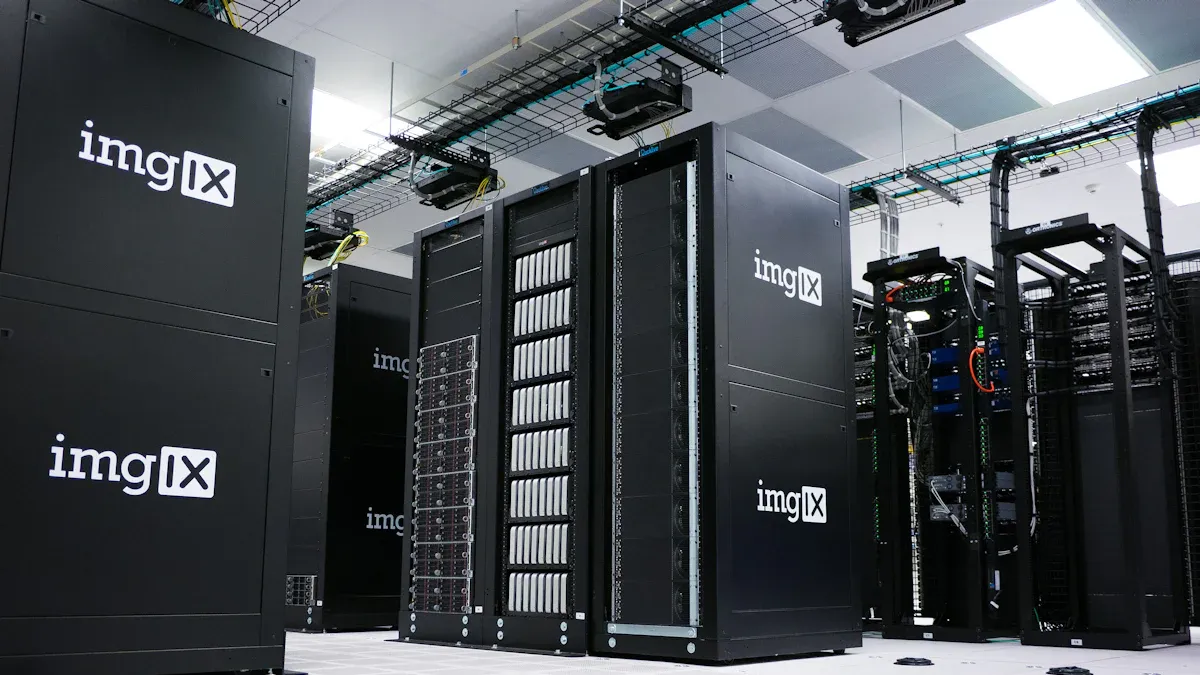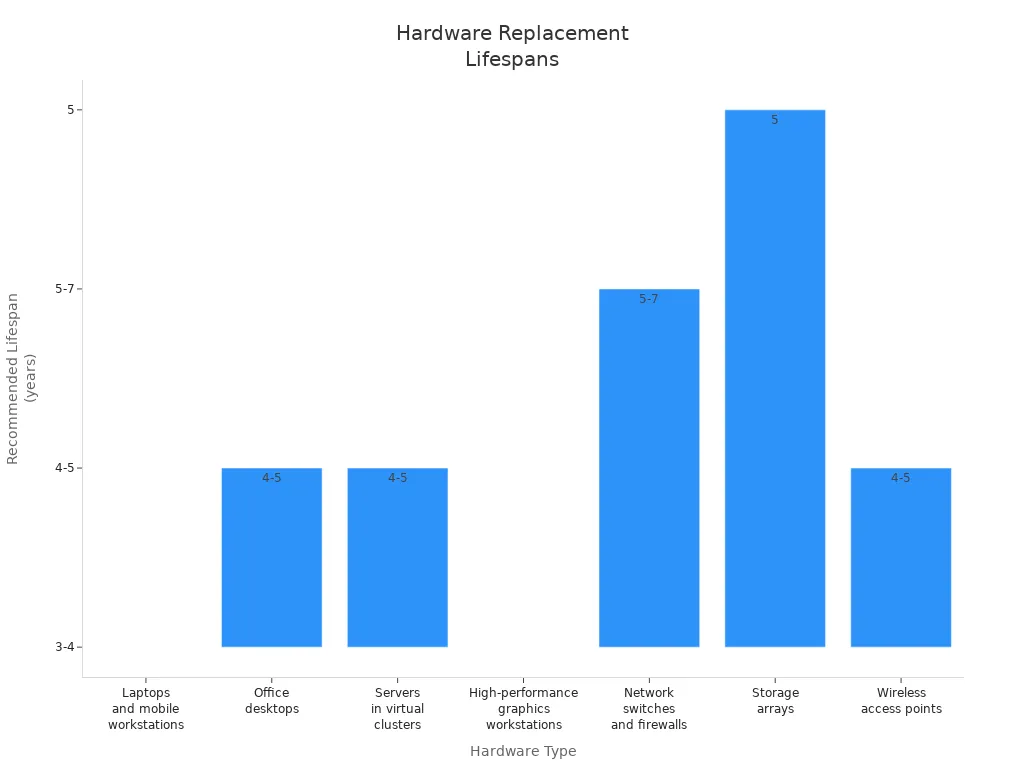Calculating the True Cost of Self-Managed Data Warehouses

You have many costs when you run a data warehouse. The True Cost is more than hardware and software. You pay for servers and storage. You also pay for licenses, staff, and training. There are hidden costs like downtime and compliance. These costs can surprise you. You must look at what you see and what you do not see. This guide gives advice and real examples. If you compare self-managed systems to managed solutions, these numbers matter.
Key Takeaways
Know that the True Cost of a data warehouse has many parts. It includes hardware, software, staff, and hidden costs like downtime. Plan for both starting and future costs. Ongoing costs can get bigger as your data grows. Use platforms like Singdata to lower how much you spend. They can help you save up to 90% on maintenance and support. Check your cost plan often to find hidden costs. Change your budget as your business gets bigger. Spend money on training and skilled staff. This helps you avoid mistakes and keeps your data warehouse working well.
True Cost Overview

Knowing the true cost of a self-managed data warehouse helps you make good choices. You should not just think about the price of hardware or software. The true cost means everything you pay to set up, run, and keep your data warehouse working. This is important because costs can start small but get bigger as your needs change.
Sometimes, costs for a small setup can be as low as $1,000. Big companies might spend up to $200 million over several years. The cost range is wide because every business is different. Some spend more on staff, and others buy better hardware or software. You need to think about money you spend at first and what you pay each month or year.
💡 Tip: Always plan for now and later. Ongoing costs can surprise you if you only look at the starting price.
Main Cost Categories
You will have several main cost categories when you manage your own data warehouse. Each category is a different part of your project. Here is a table that shows the main areas you should expect:
Cost Category | Description |
|---|---|
Data storage and infrastructure | Hardware and software needed to store, manage, and access the data. |
BI and data visualization software | Tools for users to access and study the data. |
ETL solutions | Solutions to extract, change, and load data into the data warehouse. |
Internal headcount and external consultants | Costs for staff who design, build, and take care of the data warehouse. |
You need to plan for each of these areas. Some costs, like storage, are easy to see. Others, like staff time or consulting, are harder to guess.
TCO Factors
The total cost of ownership (TCO) is all the money you spend over the life of your data warehouse. You must look at both direct and indirect costs. Here are some reasons why you should always think about both starting and ongoing expenses:
Organizations often forget about ongoing costs, which can be bigger than starting costs because of data growth and more users.
The total cost of ownership (TCO) includes both direct and indirect costs, like user time spent using the data warehouse.
It is important to explain the costs for both starting and keeping a data warehouse to get funding and keep your project going.
You can see how costs change with different setups. For example, a self-managed Cassandra setup can cost over $2.7 million in three years. Some solutions, like Astra DB, can cut infrastructure costs by 80% and lower staffing costs by 95%. New platforms, such as Singdata, say they offer zero-cost operation and maintenance, cutting 90% of Ops Cost. These savings can help your budget a lot.
Deployment Type | Total Cost of Ownership (3 years) | Staffing Costs | Complexity | Infrastructure Costs |
|---|---|---|---|---|
Astra DB | $353,346 | 95% less | 3x less | 80% lower |
Self-managed Cassandra | $2,797,123 | N/A | N/A | N/A |
When you plan your data warehouse, always look at everything. The true cost is not just what you pay now, but also what you keep paying as your business grows.
Hardware Costs

Servers & Storage
You need strong servers and enough storage to run your data warehouse. The price depends on how much data you have and how fast you need to process it. Entry-level servers can cost a few thousand dollars each. High-end servers for large companies can cost over $10,000 each. Storage costs also add up. You might pay $100 for a basic hard drive, but enterprise storage systems can cost thousands. If you want to save on operation and maintenance, some platforms like Singdata claim to cut 90% of operations costs with zero-cost operation and maintenance. This can help lower your True Cost over time.
Tip: Plan for growth. Your data will increase, so choose hardware that can scale with your needs.
Networking
You must connect your servers and storage with fast and reliable networking equipment. Basic network switches start at $100, but enterprise-grade switches and routers can cost several thousand dollars. You may also need to buy cables, firewalls, and load balancers. These tools keep your data moving quickly and safely. If your team works in different locations, you might need to invest in VPNs or dedicated network lines, which can raise costs.
Backup Systems
Protecting your data is very important. Backup systems help you recover from hardware failures or data loss. The cost of backup depends on how much data you have and how quickly you need to restore it. Here are some common costs:
Local backup hardware, like external drives, ranges from $50 to $100. Network-attached storage (NAS) devices can cost $200 to over $1,000.
Cloud backup plans start at $10 to $50 per month for 100GB to 1TB. Advanced plans can cost $50 to $200 or more each month.
Hybrid solutions combine local and cloud backups. These often require $500 to $1,500 upfront for hardware, plus $20 to $100 per month for cloud services.
Comprehensive backup solutions can cost $2 to $4 per GB per month. Lower-level solutions average about $1 per GB per month.
For a 30-person business, a full backup solution may cost over $1,000 each month.
Remember: The stricter your needs for fast recovery and little data loss, the higher your backup costs will be.
Software Costs
Database Licenses
You need a database to keep your data safe. Some databases are free. Many others need you to buy a license. Big names like Oracle or Microsoft SQL Server charge by users or data size. You might pay $5,000 to $20,000 each year for a small setup. Large companies sometimes pay over $100,000 every year. Open-source databases like PostgreSQL or MySQL do not charge for licenses. You may still pay for support or extra features. Singdata gives zero-cost operation and maintenance. This can cut 90% of Ops Cost. It helps you lower your True Cost as time goes on.
Note: Always check if your database license comes with support and updates. Some vendors ask for more money for these services.
ETL & BI Tools
ETL tools help you move and change data. BI tools let you look at your data and understand it. You must pick tools that work for your team and budget. Costs can be very different. Here is a table with common choices:
Scenario | Tool | |
|---|---|---|
Lean Team | Stitch | $100–$500/month |
Lean Team | Fivetran | $1,000+/month |
Mid-Market Retailer | Fivetran | $5,000–$10,000/month |
Mid-Market Retailer | Matillion | $2,000–$3,000/month |
Global Enterprise | Domo/Talend | $100k+/year |
Global Enterprise | Fivetran | $15,000–$30,000/month |
Global Enterprise | AWS Glue | Cost-effective, variable |
Global Enterprise | Azure Data Factory | Cost-effective, variable |
You can see costs go up as your business gets bigger. Some cloud tools let you pay for what you use. This helps you control your spending.
Security Software
You need to keep your data safe from threats. Security software helps protect your warehouse. You may need firewalls, encryption, and monitoring tools. Basic security software starts at $500 per year. Advanced options for big companies can cost $10,000 or more each year. Some platforms give you security features in their license. Others make you pay extra. Always check what is included before you buy.
🔒 Tip: Strong security keeps your data safe and helps you follow the law. Never skip this step.
Staffing
Hiring & Salaries
You need skilled people to run a self-managed data warehouse. Hiring the right team is one of the biggest costs you will face. Salaries for data warehouse staff can vary a lot. Entry-level data engineers may earn $70,000 to $90,000 per year. Senior engineers or administrators often make $100,000 to $130,000 each year. If you need a manager or team lead, you might pay $120,000 to $160,000 per year.
You also need to think about the cost of hiring. You may spend money on job ads, recruiters, and interviews. Training new hires takes time and money. When you add up all these expenses, staffing can become a large part of your True Cost.
💡 Tip: If you want to lower your staffing costs, consider platforms like Singdata. They offer zero-cost operation and maintenance, which can cut 90% of your operations costs. This means you may not need as many full-time staff.
Specialized Roles
Running a data warehouse often requires people with special skills. You cannot rely on general IT staff alone. Here are some of the most common specialized roles you may need:
Data Warehouse Architect: Plans and designs the structure of your data warehouse. Salary ranges from $110,000 to $150,000 per year. Pay depends on experience, company size, and location.
ETL Developer: Builds and manages the tools that move data into your warehouse.
Database Administrator (DBA): Keeps your database running smoothly and safely.
Data Analyst: Helps your team understand and use the data.
Each role brings unique skills. You may need to hire more people as your data grows. If you use a managed platform, you can often reduce the number of specialized staff you need.
Remember: The right team keeps your data warehouse running well and helps you avoid costly mistakes.
Maintenance
Updates & Patches
You need to keep your data warehouse software updated. Updates and patches fix bugs and stop threats. If you skip updates, your system can crash or get hacked. Vendors send out patches every few months. Someone must test and install these updates. Sometimes, updates cause downtime or need extra work. Maintenance fees can go up after the first support period. Old systems use more energy and may slow down your work.
🛠️ Tip: Regular updates help you avoid downtime and keep your data safe.
Platforms like Singdata give zero-cost operation and maintenance. You do not pay for updates or patching. This can cut 90% of your operations cost and save time.
Hardware Replacement
You need to replace hardware before it breaks. Old hardware can slow down your warehouse and use more energy. Waiting too long can cause data loss and compliance problems. Here is a table that shows how long to keep hardware:
Hardware Type | Recommended Lifespan |
|---|---|
Laptops and mobile workstations | 3 to 4 years |
Office desktops | 4 to 5 years |
Servers in virtual clusters | 4 to 5 years |
High-performance graphics workstations | 3 to 4 years |
Network switches and firewalls | 5 to 7 years |
Storage arrays | 5 years (with upgrades) |
Wireless access points | 4 to 5 years |

If you wait too long to replace hardware, you face risks:
Old hardware uses more energy.
Compliance risks can cost extra.
Platforms like Singdata help you avoid these problems. You do not worry about hardware replacement or high maintenance fees. This lowers your True Cost and keeps your data warehouse running well.
Training
Initial Training
You need to train your team before they start working with your data warehouse. Good training helps your staff use the system the right way. You may need to teach them how to use new software, manage data, and follow security rules. Training costs can add up fast. You might pay for classes, online courses, or even bring in outside experts.
Here are some common training options:
Vendor-led workshops: $500–$2,000 per person
Online courses: $100–$500 per person
On-site training: $2,000–$10,000 for a group
💡 Tip: Plan your training early. Well-trained staff make fewer mistakes and keep your data safe.
If you use a platform like Singdata, you can lower your training costs. Singdata’s zero-cost operation and maintenance means your team spends less time learning complex systems. You can cut up to 90% of your operations training costs.
Ongoing Education
Technology changes fast. You need to keep your team’s skills up to date. Ongoing education helps your staff learn about new features, security updates, and best practices. You might set up regular workshops or pay for new courses each year.
Education Type | Frequency | Typical Cost per Person |
|---|---|---|
Annual workshops | Once a year | $500–$1,000 |
Online refreshers | Every 6 months | $100–$300 |
Certification exams | Every 2 years | $300–$1,000 |
📚 Note: Ongoing education keeps your team ready for changes and helps you avoid costly mistakes.
With Singdata, you do not need to spend as much on ongoing training. The platform handles updates and maintenance for you. Your team can focus on using data, not fixing problems. This saves you time and money every year.
Support & Operations
Helpdesk
You need a helpdesk to support your data warehouse users. The helpdesk answers questions, solves problems, and keeps your team working. You may set up an in-house helpdesk or use an outside service. Both options have costs. In-house helpdesks need staff, training, and software. Outside services charge by the number of users or tickets.
A small business might spend $500 to $2,000 each month for basic helpdesk support. Large companies can pay much more. You must also think about the time your team spends on support. Every hour spent fixing issues is an hour not spent on business goals.
💡 Tip: Fast and friendly helpdesk support keeps your team happy and productive.
Platforms like Singdata offer zero-cost operation and maintenance. You do not need a large helpdesk team. This can cut up to 90% of your operations costs. Your staff can focus on using data instead of solving technical problems.
Monitoring
Monitoring tools watch your data warehouse all the time. They check for problems, track performance, and alert you if something goes wrong. Good monitoring helps you fix issues before they become big problems.
Monitoring tools do more than just watch systems:
They help you keep data quality high and consistent. This is important for good analytics.
These tools measure your data against business goals. You know if you meet your standards.
They lower the risk of errors during data transfers. Your data stays accurate.
Automation in monitoring tools means less manual checking. Your team saves time.
Fewer errors and less manual work lead to lower operational costs.
You may pay $1,000 to $10,000 each year for monitoring software. Some advanced tools cost even more. If you use a platform like Singdata, you get built-in monitoring with zero-cost operation and maintenance. This means you do not pay extra for these tools, and you can cut most of your monitoring costs.
📊 Note: Strong monitoring keeps your data warehouse healthy and your business running smoothly.
Cloud vs. On-Premises
Cost Differences
When you pick between cloud and on-premises data warehouses, costs are different. On-premises needs a lot of money at the start. You have to buy servers, storage, and network gear. You also pay for power, cooling, and fixing things. Cloud data warehouses use a pay-as-you-go or subscription plan. You only pay for what you use each month. This helps you skip big upfront bills.
Here is a table that shows the main cost differences:
Aspect | On-Premises Data Warehouse | Cloud Data Warehouse |
|---|---|---|
Initial Costs | Significant upfront capital expenditure | Subscription or pay-as-you-go model |
Ongoing Costs | Maintenance, upgrades, power, and cooling | Reduced operational burden on IT teams |
Cost Predictability | Unpredictable due to hardware and maintenance needs | More predictable for stable workloads |
Cloud options make it easier to know your monthly costs. You do not have to worry about surprise repair bills or broken hardware. If you use Singdata, you get zero-cost operation and maintenance. This can cut 90% of your operations costs and help you stick to your budget.
💡 Tip: Cloud data warehouses help you avoid hidden costs that on-premises systems often have.
Scalability
Scalability means you can make your data warehouse bigger or smaller as needed. Cloud platforms make this easy. You can add more storage or power with just a few clicks. You do not need to buy new hardware or wait for upgrades.
Cloud platforms let you grow your resources when you need to, without spending a lot at first. On-premises scaling is harder and costs more. You often need new hardware and more work from your team.
Cloud data warehouses have features that help you scale:
Amazon Redshift lets you add nodes fast for better speed and more space.
Oracle's Autonomous Database uses autoscaling to change resources by itself.
AWS and Snowflake give concurrency scaling, so you get more power during busy times.
On-premises systems do not grow as easily. You must plan ahead, buy new equipment, and set it up. This takes time and can cost more. With cloud, you can change fast and keep your data warehouse working well.
🚀 Note: Platforms like Singdata give zero-cost operation and maintenance. You can scale up or down without extra costs or hard upgrades.
Initial vs. Ongoing Costs
When you plan a self-managed data warehouse, you must think about two types of costs. First, there is the money you spend at the beginning. Second, there is the money you keep spending as time goes on. Both types of costs can change your budget and affect how well your project works in the future.
Setup Expenses
You have to pay setup expenses before your data warehouse starts working. These costs include everything you need to build your system. For on-premises solutions, you must buy servers, storage, and network devices. You also need to get software licenses and hire experts to help set things up. Cloud-based options can lower hardware costs, but you still pay for software and skilled workers.
Here is a table that lists common setup expenses:
Cost Category | Description | |
|---|---|---|
Hardware | Servers, Storage, Network Devices | $5,000 – $50,000+ |
Software | Data Warehouse Platform, ETL, BI Tools | $2,000 – $100,000+ |
Implementation & Consulting | Data Modeling, ETL Development, Integration | $20,000 – $100,000+ |
You can see that setup costs are different for each business. The amount you pay depends on what you need and how big your company is. Planning for these costs helps you avoid being surprised later.
Recurring Costs
After you finish setup, you have recurring costs. These are the costs you pay to keep your data warehouse working well. You need to save money for user support, hardware upgrades, software maintenance, and training. These costs can get bigger as your data warehouse grows.
Cost Type | Description |
|---|---|
User Support | Maintenance teams and Help Desk to assist users. |
Hardware Upgrades | Regular upgrades for workstations and software. |
Software Maintenance | Updates and maintenance of all software used. |
Training Costs | Training IT professionals in areas like metadata management. |
If you use a platform like Singdata, you can make your recurring costs lower. Singdata gives zero-cost operation and maintenance. This can cut 90% of your operations costs. It makes it easier to control the True Cost of your data warehouse as time passes.
Hidden Expenses
Hidden expenses can be a big surprise. These costs are not easy to see at first. You might not notice them in your first budget. To know the True Cost, you need to look past the bills you expect. Many groups do not see these hidden expenses until trouble starts.
Downtime
Downtime means your data warehouse stops working. Even a short break can cost a lot of money. On average, downtime costs about $5,600 each minute. Some companies pay up to $9,000 per minute. Small businesses might lose $427 every minute. These costs add up quickly. You can lose money, customers, and trust. Downtime also slows your team and makes projects late.
⚠️ Tip: Always plan for downtime. Use backup systems and strong monitoring tools to find problems early.
Platforms like Singdata help you avoid most downtime. Their zero-cost operation and maintenance can cut 90% of your operations costs. You get built-in monitoring and fast recovery. This keeps your business running.
Compliance
You must follow laws and rules when you use data. Compliance costs can sneak up on you. If you do not meet standards, you might get fines or legal trouble. Some hidden expenses are:
Paying for audits and certifications
Upgrading security tools to meet new rules
Training staff on new compliance policies
Other hidden costs come from poor data management. For example:
Cloud storage overload from duplicate files and expired records raises your fees.
Bad document management software creates security risks and slows your team.
Low-quality data can hurt your AI projects and waste time and money.
📝 Note: Good compliance saves money and protects your business. Check your systems often to avoid surprises.
If you use a managed platform like Singdata, you get built-in compliance features. This helps you avoid extra costs and keeps your data safe.
Case Studies
Mid-Sized Business
You run a mid-sized business with 100 employees. You want to build a self-managed data warehouse. You start by buying servers and storage for $40,000. You pay $15,000 for software licenses and $25,000 for consulting. Your team spends $10,000 each year on training and $12,000 on support. You also pay $8,000 yearly for backup and monitoring tools.
Your yearly recurring costs reach $30,000. You notice hidden expenses like downtime and compliance audits. One outage costs you $3,000 in lost sales. You pay $5,000 for a data privacy audit. These costs add up and make your budget tight.
💡 If you use Singdata, you can cut 90% of your operations costs. You do not pay for maintenance or updates. Your team spends less time fixing problems and more time using data.
Large Enterprise
You manage a large enterprise with thousands of users. You invest $2 million in on-premises infrastructure. You pay $500,000 for software and $300,000 for consulting. Your staffing costs reach $1 million each year. You spend $200,000 on training and $150,000 on support. Backup and monitoring cost $100,000 yearly.
You face unexpected expenses:
You pay for idle capacity because you cannot adjust infrastructure quickly.
You struggle to track cloud costs as usage grows.
You pay high migration fees when switching platforms.
Vendor lock-in makes it hard to change solutions.
Your True Cost keeps rising. You learn that cloud data warehouses offer scalability, but you must watch for unlimited costs. If you switch to Singdata, you avoid most maintenance fees and cut 90% of your Ops Cost. You gain better cost control and fewer surprises.
📝 Lesson: Always plan for hidden costs. Choose solutions that help you manage and reduce them.
Cost Optimization
Data Modeling
You can save money by using smart data modeling. Good data modeling helps your team make fewer mistakes. If your data model is simple, you fix fewer errors. You get more value from your data. Here are some ways to help:
Use the same names for tables and columns.
Keep your data structures simple, not confusing.
Use common IDs to join data from different places.
Work with software teams to agree on data structures.
🧠 Tip: Simple data models help you spend less. They make projects faster and less confusing.
Platforms like Singdata give you zero-cost operation and maintenance. You do not waste time or money fixing data model problems. This can cut up to 90% of your operations cost. For example, if you paid $10,000 a year before, Singdata could lower it to $1,000.
Resource Management
Managing resources well helps you keep costs low. You can use these best practices to save money:
Compress your data to use less space and power.
Remove old or unused data with lifecycle management.
Tune your system’s performance to avoid extra charges.
Make cost optimization part of your team’s routine.
💡 Note: Singdata gives you built-in resource management tools. You spend less time on manual work. You can focus more on your business goals.
Cost Estimation Tips
Building a Cost Model
You need a simple cost model to see your data warehouse expenses. First, write down every cost you think you will have. This means hardware, software, staffing, training, and support. Remember to add hidden costs like downtime and compliance. Use a table or spreadsheet to keep your numbers neat.
Here is an easy way to make your cost model:
Write all cost categories.
Put estimated amounts for each one.
Split starting costs from ongoing costs.
Check your numbers every few months.
💡 Tip: Always look at your cost model as your business gets bigger. Costs can go up quickly.
If you use Singdata, you can set operation and maintenance costs to zero. Singdata’s zero-cost operation and maintenance can lower your Ops Cost by 90%. This makes your cost model much simpler to handle.
Cost Category | Initial Cost | Ongoing Cost (Yearly) |
|---|---|---|
Hardware | $10,000 | $2,000 |
Software | $5,000 | $1,000 |
Staffing | $20,000 | $20,000 |
Maintenance | $2,000 | $2,000 |
Singdata Ops | $0 | $0 |
Tools & Templates
You can use different tools to help guess your costs. Spreadsheets like Microsoft Excel or Google Sheets are good choices. You can find free templates online for IT cost estimation. Some platforms have their own calculators.
Here are some helpful tools:
Excel/Google Sheets: Make your own tables and charts.
Online calculators: Try ones from AWS, Azure, or Google Cloud.
Singdata’s cost estimator: See how much you save with zero-cost operation and maintenance.
📊 Note: Use templates to save time. Update your tools often so they match your real costs.
With the right tools, you can watch your spending and avoid surprises. This helps you make smart choices for your data warehouse.
You need a complete plan to understand the true cost of your data warehouse. Look at both the starting costs and the money you spend each year. Do not forget hidden expenses like downtime and compliance.
Singdata gives you zero-cost operation and maintenance, cutting 90% of your Ops Cost. This helps you control your budget.
Review your cost model often.
Use real examples and tips from this guide.
Choose tools that make cost management easier.
FAQ
What hidden costs should you watch for in self-managed data warehouses?
You need to look out for downtime, compliance fees, and extra staff. These costs can surprise you when you do not expect them. Singdata helps you avoid most hidden costs with zero-cost operation and maintenance.
💡 Tip: Always look for costs that are not in your first budget.
How does Singdata help you lower your data warehouse costs?
Singdata gives you zero-cost operation and maintenance. You can lower up to 90% of your operations costs. You do not pay for updates, monitoring, or support.
Feature | Cost with Singdata | Cost without Singdata |
|---|---|---|
Maintenance | $0 | $2,000/year |
Monitoring | $0 | $1,000/year |
Support | $0 | $1,500/year |
Is cloud or on-premises better for cost control?
Cloud data warehouses help you keep costs low. You pay only for what you use each month. On-premises systems need a lot of money at the start. Singdata works in the cloud and gives you zero-cost operation and maintenance.
📊 Cloud choices make it easier to know your monthly costs.
How often should you review your data warehouse costs?
You should check your costs every three to six months. This helps you find new expenses and save money. Singdata’s zero-cost operation and maintenance makes cost checks easy.
📝 Checking costs often keeps your budget safe and your data warehouse working well.
See Also
Strategies to Reduce Data Platform Maintenance Expenses Effectively
Affordable Cloud Database Options for Managing Large Data Sets
Navigating Modern Data Management Challenges in Businesses Today
Framework and KPIs for Data-Driven SKU Optimization Strategies
Smart Data Solutions for Enterprises Leveraging Artificial Intelligence
